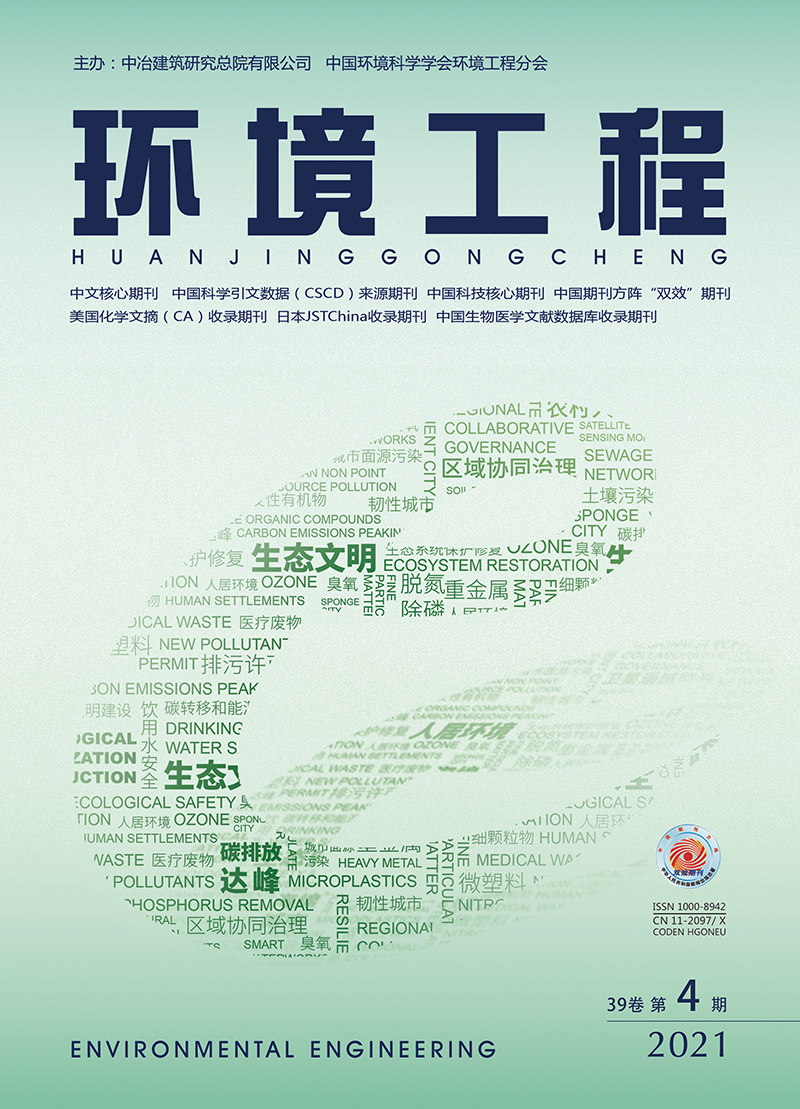| [1] |
汤文帅,方雨虹,陈涛,等. 电镀废水原位制备Ni(Zn)Cr混合氧化物/磁性石墨烯复合材料及其电催化性能研究[J]. 电镀与涂饰, 2019, 38(13):689-696.
|
| [2] |
GHORPADE A, AHAMMED M M. Water treatment sludge for removal of heavy metals from electroplating wastewater[J]. Environmental Engineering Research, 2017, 23(1):92-98.
|
| [3] |
KUMAR V, DWIVEDI S K. Hexavalent chromium stress response, reduction capability and bioremediation potential of Trichoderma sp. isolated from electroplating wastewater[J]. Ecotoxicology and Environmental Safety, 2019, 185:109734.
|
| [4] |
TAN H, WANG C, ZENG G Q, et al. Bioreduction and biosorption of Cr(Ⅵ) by a novel Bacillus sp. CRB-B1 strain[J]. Journal of Hazardous Materials, 2020, 386:121628.
|
| [5] |
KUMAR V, DWIVEDI S K. Hexavalent chromium reduction ability and bioremediation potential of Aspergillus flavus CR500 isolated from electroplating wastewater[J]. Chemosphere, 2019, 237:124567.
|
| [6] |
MA L L, XU J M, CHEN N, et al. Microbial reduction fate of chromium (Cr) in aqueous solution by mixed bacterial consortium[J]. Ecotoxicology and Environmental Safety, 2019, 170:763-770.
|
| [7] |
BANERJEE S, MISRA A, CHAUDHURY S, et al. A Bacillus strain TCL isolated from Jharia coalmine with remarkable stress responses, chromium reduction capability and bioremediation potential[J]. Journal of Hazardous Materials, 2019, 367:215-223.
|
| [8] |
ELANGOVAN R, PHILIP L, CHANDRARAJ K. Hexavalent chromium reduction by free and immobilized cell free extract of Arthrobacter rhombi-RE[J]. Applied Biochemistry and Biotechnology, 2010, 160(1):81-97.
|
| [9] |
BAI Y N, LU Y Z, SHEN N, et al. Investigation of Cr(Ⅵ) reduction potential and mechanism by Caldicellulosiruptor saccharolyticus under glucose fermentation condition[J]. Journal of Hazardous Materials, 2018, 344:585-592.
|
| [10] |
GE S M, SHI C G. Simultaneous Cr(Ⅵ) reduction and Zn(Ⅱ) biosorption by Stenotrophomonas sp. and constitutive expression of related genes[J]. Biotechnology Letters, 2016, 38(5):877-884.
|
| [11] |
魏蓝. 土壤微生物对六价铬的还原及稳定化效果研究[D]. 苏州:苏州科技大学, 2017.
|
| [12] |
WAN R, CHEN Y G, ZHENG X, et al. Effect of CO2 on microbial denitrification via inhibiting electron transport and consumption[J]. Environmental Science Technology, 2016, 50(18):9915-9922.
|
| [13] |
朱文杰. Leucobacter sp.CRB1菌还原铬(Ⅵ)的机理及其在铬渣解毒中的应用[D]. 长沙:中南大学, 2008.
|
| [14] |
ZHAO S Y, SU X X, WANG Y Y, et al. Copper oxide nanoparticles inhibited denitrifying enzymes and electron transport system activities to influence soil denitrification and N2O emission[J]. Chemosphere, 2020, 245:125394.
|
| [15] |
VITI C, MARCHI E, DECOROSI F, et al. Molecular mechanisms of Cr(Ⅵ) resistance in bacteria and fungi[J]. FEMS Microbiology Reviews, 2014, 38(4):633-659.
|
| [16] |
CHAI L Y, DING C L, LI J W, et al. Multi-omics response of Pannonibacter phragmitetus BB to hexavalent chromium[J]. Environmental Pollution, 2019, 249:63-73.
|
| [17] |
THATOI H, DAS S, MISHRA J, et al. Bacterial chromate reductase, a potential enzyme for bioremediation of hexavalent chromium:a review[J]. Journal of Environmental Management, 2014, 146:383-399.
|
| [18] |
KANNT A, OSTERMANN T, MULLER H, et al. Zn2+ binding to the cytoplasmic side of Paracoccus denitrificans cytochrome c oxidase selectively uncouples electron transfer and proton translocation[J]. FEBS Letters, 2001, 503(2/3):142-146.
|
| [19] |
KAPPLER U, DAVENPORT K, BEATSON S, et al. Complete genome sequence of the facultatively chemolithoautotrophic and methylotrophic alpha Proteobacterium Starkeya novella type strain (ATCC 8093(T))[J]. Standards in Genomic Sciences, 2012, 7(1):44-58.
|
| [20] |
韩倩. 亚硝酸还原酶产生菌的筛选、发酵优化以及酶学性质研究[D]. 广州:华南理工大学, 2015.
|
| [21] |
HUO Y Y, CHENG H, HAN X F, et al. Complete Genome Sequence of Pelagibacterium halotolerans B2(T)[J]. Journal of Bacteriology, 2012, 194(1):197-198.
|
| [22] |
XI J, SHENG X F, HE L Y. Draft Genome Sequence of Rhizobium sp. H41, a Rock-Weathering Bacterium from a Weathered Rock Surface[J]. Microbiology Resource Announcements, 2014, 2(6):e01127-14.
|
| [23] |
CHAI L Y, DING C L, TANG C J, et al. Discerning three novel chromate reduce and transport genes of highly efficient Pannonibacter phragmitetus BB:from genome to gene and protein[J]. Ecotoxicology and Environmental Safety, 2018, 162:139-146.
|
| [24] |
周思敏,董兰岚,何元,等. ChrA基因在大肠杆菌中的表达及其抗铬特性[J]. 南方医科大学学报, 2017, 37(10):1290-1295.
|
| [25] |
XU X J, XIA L, CHEN W L, et al. Detoxification of hexavalent chromate by growing Paecilomyces lilacinus XLA[J]. Environmental Pollution, 2017, 225:47-54.
|
| [26] |
KHAN S, LV J, IQBAL A, et al. Morphophysiological and transcriptome analysis reveals a multiline defense system enabling cyanobacterium Leptolyngbya strain JSC-1 to withstand iron induced oxidative stress[J]. Chemosphere, 2018, 200:93-105.
|
| [27] |
SATAPUTE P, PAIDI M K, KURJOGI M, et al. Physiological adaptation and spectral annotation of Arsenic and Cadmium heavy metal-resistant and susceptible strain Pseudomonas taiwanensis[J]. Environmental Pollution, 2019, 251:555-563.
|


 Login
Login Register
Register E-alert
E-alert






 DownLoad:
DownLoad: